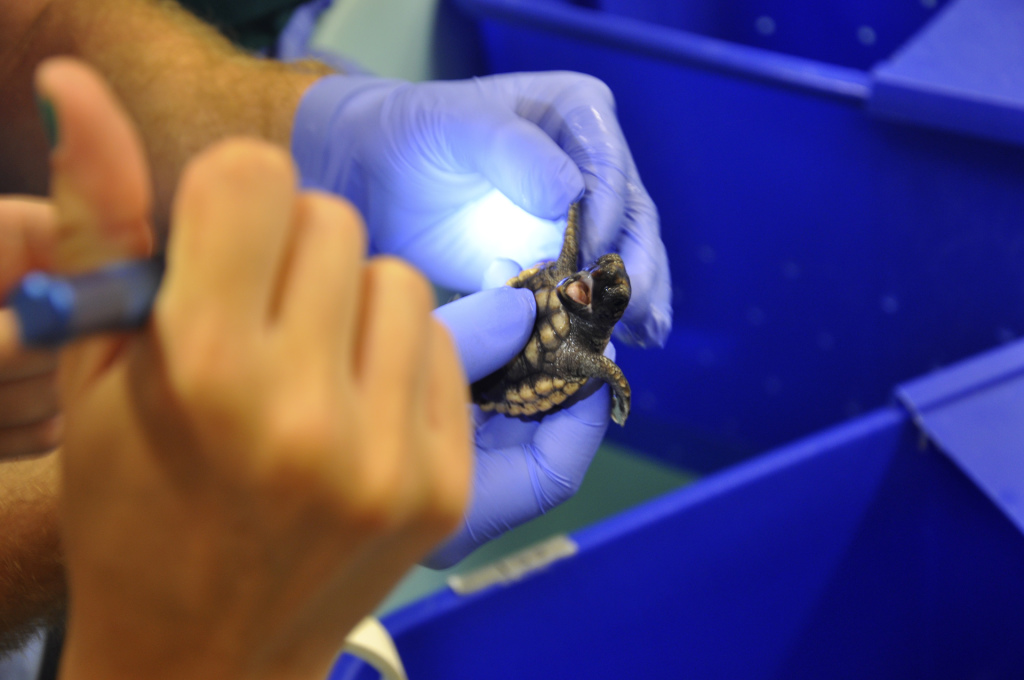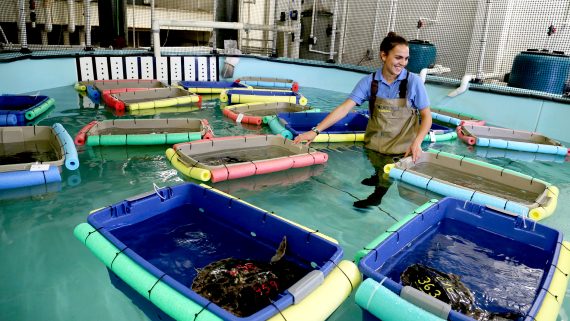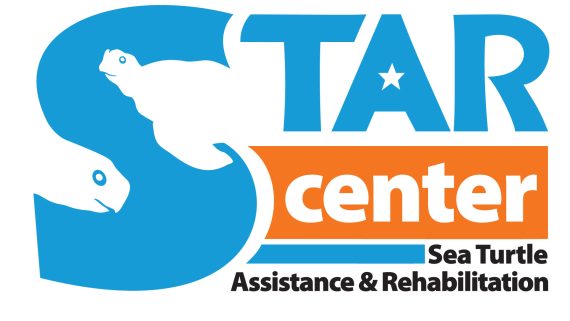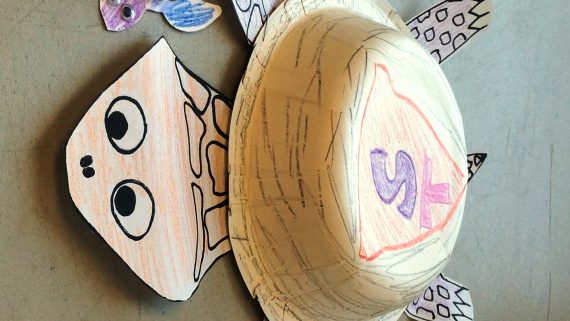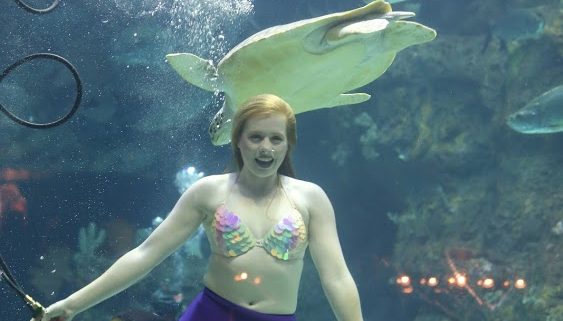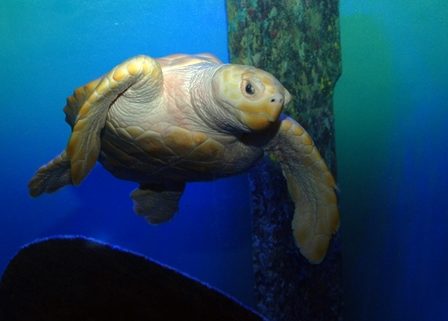Welcome to the Aquarium, Baby Turtles!
Have you met our sea turtle ambassadors? When you visit the North Carolina Aquarium at Fort Fisher, you will meet a loggerhead hatchling educating our visitors about sea turtles. The hatchling stays at the Aquarium for a little more than a year as they grow big and strong. On August 18 we welcomed two new hatchlings into our collection. Once they grow a little larger, the hatchlings will replace the yearling (one year old) turtles that served as animal ambassadors during the past year. The yearling turtles will be released to the ocean. Read about releasing sea turtles in this post.
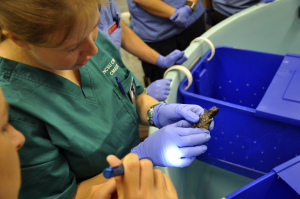
One of the new hatchlings being checked out by the Vet.
This year’s hatchlings come from the Fort Fisher State Recreation Area. Their nest, Fort Fisher Nest #4, was laid on June 15, 2014. Sixty-one days later, the nest hatched on August 15. The nest contained 107 eggs. Of those 107 eggs, 101 hatched and 6 did not. The two hatchlings that came to the aquarium were found in the bottom of the nest during excavation. Seventy-two hours after a nest hatches, it is excavated to count the eggs. When turtles are found in the bottom of the nest they are typically released out into the ocean. You can learn more about this process in our nest excavation lesson.
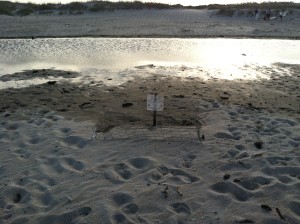
Nest on Bald Head Island
Unless an animal is non-releasable and will be living at the aquarium for the rest of its life, animals do not receive names at the aquarium. However, your class has an opportunity to adopt one of our sea turtles. When you adopt a turtle, you will receive a certificate of participation allows you the opportunity to name the turtle. Learn more about this program on our Adopt a Turtle page.
Over the course of the year, we will post the weekly weights and lengths of the seaturtle. In order to make sure the turtles get the best care, they are closely monitored. Each week the turtles are weighed and measured to determine how much they are growing. The staff uses the weight of the turtles to determine how much the turtles should be fed. Each turtle is fed a percentage of its body weight. The smaller the turtle, the larger the percentage they are fed. You can see these ratios here:
[table id=1 /]
The turtles are closely monitored by Julie, Carol, and Judy each week to make sure they are growing at a healthy rate. If the turtles are fed too much, their bones will grow too quickly. This could potentially weaken the turtle’s skeleton. If they are fed too little, the turtles will not grow to be strong and healthy. At the North Carolina Aquarium at Fort Fisher, our turtles are fed half of their food in the morning and the other half at the end of the day. In the morning, the turtles typically receive a gel food, made from unflavored gelatin, vegetables, fish and calcium powder. The gel food ensures the hatchlings receive all the necessary nutrients. In the afternoon, the turtles are fed meat, which typically consists of fish or squid. On occasion, they are also treated to jellyfish, one of their favorite foods. You can watch how we prepare sea turtle food in this video:
If you follow our blog each week, you can use the data to complete the Hatchling to Yearling lesson plan. Your class can graph the growth of the turtles over the course of the school year. See below the turtle’s weights and lengths so far:
[table id=2 /]
For this data set we are using straight length. To learn more about this, watch our video on weighing and measuring sea turtles.
Have you ever seen a sea turtle nest hatch? Tell us about the experience in the comments below.


